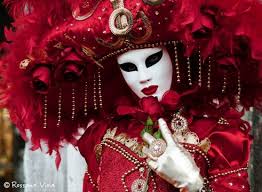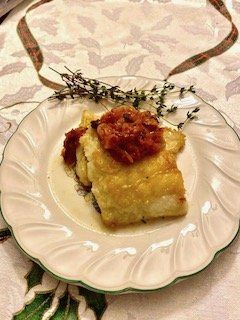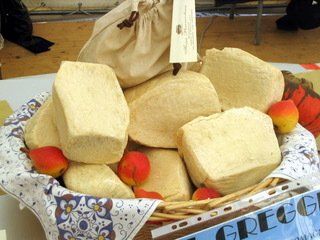Places & Stories

The day before Lent begins is celebrated throughout Italy, non more so than the famous Carnevale in Venice. Also known as Quaresima, or the 40th day, in Italian, Lent is the word Catholics use to describe the fast before Easter. With Catholics making up a majority of Italy it is no doubt the holiest time of the year. The reason behind the Carnivale is that it is the last day before the fast begins. Lent is meant to symbolize the fast of Jesus during his 40 days in the desert. While the origins may date back to apostolic times, it was formalized by the first council of Nicea in 325 ce. However there is much scholarly debate as to the timing of the fast throughout the ages and by the different schisms of the Catholic Church. The Eastern Orthodox start and end their lent on different dates than the Roman Catholics who traditionally started their's on “Ash Wednesday” and ending on Easter Day. Throughout history the nature of what constitutes a “fast” also evolved. Originally, one meal a day was allowed in the evening, and meat, fish, eggs, and butter were forbidden. Gradually the restriction was an abstention from “food derived from the flesh”. This not only meant meat, but also dairy products such as eggs. This may explain the tradition of gifting eggs at Easter. A common fallacy is that fish was eventually “allowed” by the Church to prop up the Italian fishing industries. There is no evidence to support the claim. Italy, despite being a peninsula, does not really enjoy a robust fishing industry. The sea currents make fishing much more seasonal, and fresh fish barely finds it way inland. Keep in mind “Italy” wasn’t a unified country until 1860. The reason was more likely due to the role of fishes and fishermen played in the scriptures of Jesus. Given that most of Italy was still in winter during the time vegetable choices were also skimpy. So the prohibition of meat, dairy and the scarcity of vegetables suited the penance sought by Catholics during their holiest period. Today many Catholics in Italy will forgo meat on Friday in honor of this tradition. Of course today that is not so much of a burden with many vegetarian dishes available . You'll find many hearty soups such as the classic "Pasta e fagioli", a favorite soup this time of year.

Between the 12th and the 13th century, Bologna had somewhere between 100 to 180 towers of different sizes. The reasons for this are unclear, ranging from a show of wealth among rival families to defensive purposes. It is hard to imagine what the skyline must have looked like to a visitor approaching the city via the Emilia Way, the ancient road that led all the way back to Rome. At the entrance to the city on this road stood the tallest tower, the 320-foot Asinelli Tower. Next to it stands the truncated Garisenda Tower, presenting Bologna with a classic due torri signature that still stands today. Built by rival families in the 12th century, the Garisenda tower was originally about the same height as its neighbor. However, the tower began to take on an unfortunate lean that forced its height to be taken down. Even the Asinelli has a slight lean to it, making them the “leaning towers of Bologna”. Today, it is possible to walk up the 498 wooden steps to the top of the Asinelli tower for a fantastic overview of the city. After the 13th century, some towers were demolished, others collapsed, and many were destined to different uses, such as residential or commercial buildings, or as prisons. The last demolitions occurred in the early 20th century, along with the 14th-century city walls. No more than twenty towers remain today in Bologna. During the market visit walk in the morning, we pass a few. The vegetable stand sits at the base of one and another is a restaurant. The “Towers of Bologna” are just another reason to come and visit this beautiful city.

Italians take no back seat when it comes to producing sparkling wines. Prosecco from the Veneto, is a popular low cost, high value wine known around the world. It is made from the Glera grape and produced via the Charmat method; meaning that the second fermentation occurs in a large vat. Franciacorta is Italy’s answer to Champagne. It is produced in Lombardy using the traditional method where the second fermentation occurs in the bottle. Like Champagne, Chardonnay and Pinot Noir grapes are generally used. Emilia Romagna is no stranger to sparkling wines either. The most famous, Lambrusco, was a very important export into the US back in the 80’s and now is exported around the world. The wines are located in the Emilia side of the region and is generally produced via the Charmat method. Some of the DOC (Denominazione di Origine Controllata) classified regions producing Lambrusco include: Emilia DOC Lambrusco di Sorbara DOC Lambrusco Grasparossa di Castelvetro DOC Lambrusco Salamino di Santa Croce DOC Modena DOC Reggiano DOC However, there are other sparkling wines being produced in the region. Pignoletto is a DOC region where you can find a Spumante wine using the Grechetto grape. It is a light wine typically served as an aperitif. In Romagna, Dr. Fiorentini, a winemaker in Fiorli, makes an IGT (Indicazione Geografica Tipica) wine he simply calls BVB. He uses the Charmat method and a very ancient grape called Famosa. It is a white aromatic grape similar in style to Moscato. It virtually disappeared in the twentieth century. With a little help from the University of Bologna, the grape staged a comeback of sorts and can be found growing on the countryside east of the city. Fiorentini wines are served at the Culinary Institute of Bologna and this wine tends to be one of the favorites. Sparkling wines go well with the foods of the regions as they tend to be a bit more fatty. Think prosciutto and mortadella. A visit to his winery is always fun as he loves to offer his philosophy on wine. And life!

There are many "traditional" dinners made by families throughout Italy on Christmas Eve, but most involve some sort of fish as it is usually observed as a day of fasting from meat. A popular tradition known in the south of Italy is the "Feast of the Seven Fishes" which, as the name implies, is loaded with local fish baked or fried. But in families throughout Italy, it would be common to serve Baccala, a salted cod that has been soaked in water for 2 to 3 days. Because of its preservation, salted cod was a popular holiday choice especially for people living away from the coast. It is very versatile and can be fried or baked. A very simple way to prepare it is to coat it in flour and then fry it in olive oil. (make sure you soak it and change the water several times) A nice condiment is friggione, or onions braised for hours in tomatoes. Friggione is typical Bolognese. You can also serve it over grilled polenta.

The beautiful city of Florence is now part of our 7 and 10 day vacation packages. From Bologna, we will go and visit the newly renovated San Lorenzo Market . The market is housed in a building that was designed by Giuseppe Mengoni, the same architect who designed the Galleria Vittoria Emanuele II in Milan and was built from 1870-74. Outside the building are many vendors where you can buy speciality gifts, jewelry and leather items. On the first floor is the Mercato Centrale full of food vendors representing the finest Tuscan specialities. Sample local cheeses, cured meats and wine. Try the local street food, lampredotto , which is a sandwich made from tripe. You can purchase the traditional liqueur, Alkeremes , a scarlet colored aperitiff that is used in many traditional recipes. Just imagine wandering from one stall to the next tasting regional specialities and to top of your day, drink an espresso from the coffee bar. Depending on how much time you want to spend in the market, our trip can include some of the other fabulous sites of the city such as the famous cathedral, the Basilica di Santa Maria Novella. You can tailor your visit with your personal chef who will be your guide on the trip.




